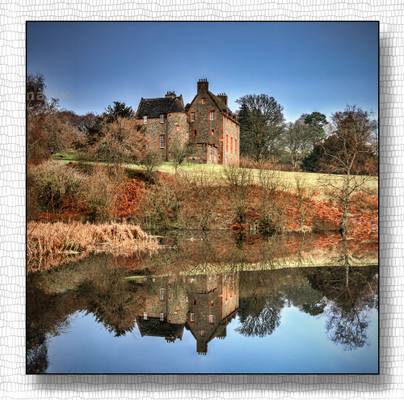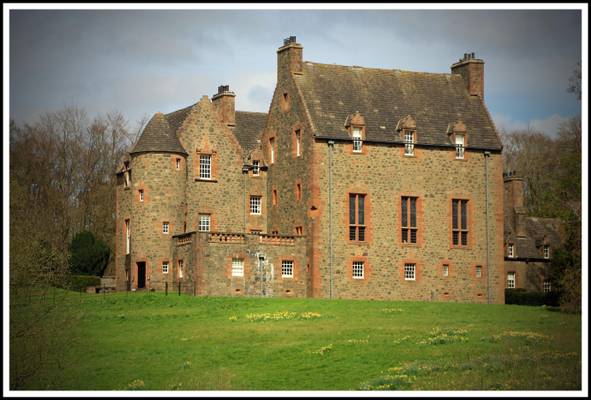Formakin Mansion House

0
Private gardens to the rear of Formakin House

0
Formakin House is an early 20th-century mansion within the Formakin Estate in Renfrewshire, Scotland. It is located just to the west of the village of Bishopton. Formakin House was designed by architect, Robert Lorimer for wealthy businessman John Holms,. Lorimer produced designs for the house in 1909, in the style of a 17th-century Scottish tower house. The shell of the house had been completed by 1913, when work stopped as Holms had lost money on a bad speculation, and a fall from a horse supposedly upset his mental balance, further work was carried out in 1920, but the house was never completed. When Holms died in debt in 1938, Formakin was sold to the Bradford-born entrepreneur Albert Ernest Pickard, owner of the Britannia Panopticon among other Glasgow ventures. By the 1970s the buildings and grounds were derelict. After Pickard died the Renfrew District Council campaigned to save the estate, eventually purchasing it in 1984 with funding from the National Heritage Memorial Fund. Formakin was operated as a visitor attraction for a time, and plans were made to redevelop the buildings and grounds. The venture was not successful, so between 1988 and 1999 the estate buildings were restored and converted into 17 dwellings by Country House developer Kit Martin.

0
Formakin House, which is also known as the Monkey House, lies between Langbank and Houston, and has been an object of curiosity to Renfrewshire residents for years. The monkey reference relates to the stone monkeys adorning the roofs of the gatehouse and other buildings, some of which appear to be frolicking along the ridge of the roof. Many have been lost or removed over the years, however those on the gatehouse have survived intact. Within the main house, door lintels and fireplaces are also decorated with relief carvings of more monkeys.